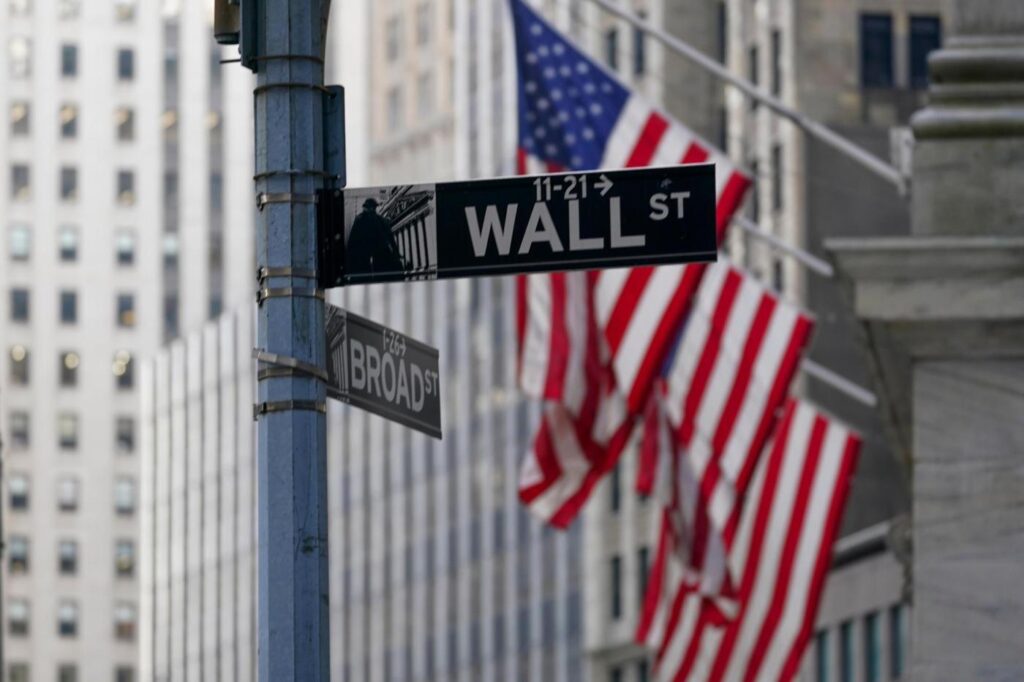
By STAN CHOE
NEW YORK (AP) — Stocks are mixed and Treasury yields are jumping on Friday after a blowout U.S. jobs report raised Wall Street’s expectations that the Federal Reserve will soon start raising interest rates sharply.
The S&P 500 was 0.2% higher in early trading after the Labor Department said employers added 467,000 jobs last month, triple economists’ forecasts. Some economists were even expecting a loss of jobs amid January’s surge in coronavirus infections because of the omicron variant.
Higher rates would make investing more challenging across markets, and most of the stocks in the S&P 500 were falling. But an 11.2% leap for Amazon following a strong earnings report almost singlehandedly lifted the index.
The Dow Jones Industrial Average was down 60 points, or 0.2%, at 35,050, as of 10 a.m. Eastern time. The Nasdaq Composite was 0.8% higher, and the smaller stocks in the Russell 2000 were down 0.4%.
Treasury yields leaped immediately following the jobs report’s release, tracking forecasts that the Fed will hike short-term interest rates more aggressively than earlier expected. The two-year yield, which tends to move with expectations for the Fed’s actions, jumped to its highest level since the start of the pandemic and is more than double what it was two months ago.
The wide expectation is for the Fed to raise short-term rates next month off their record low of nearly zero, with the only question by how much. Friday’s jobs report has investors now pricing in a nearly 29% probability of an increase of 0.50 percentage points, instead of the traditional 0.25 points. That’s more than double the probability that Wall Street foresaw a day earlier.
Any increase would mark an abrupt turnaround from most of the last two years, when ultra-low rates helped prices surge for everything from stocks to cryptocurrencies. Higher rates make investing more challenging across markets because when bonds pay more in interest, investors feel less need to reach for risky things for returns.
January’s strong hiring figures seem to back up the Fed’s belief that the economy is strong enough to withstand an increase in interest rates. The report also seemed to underscore how inflation remains a problem.
Average hourly earnings for workers jumped 5.7% in January from a year earlier. That was an acceleration from December’s 5.2% rise, despite economists’ expectations for a slowdown. While such raises are great for workers, higher wages can also feed into longer-lasting inflation than if prices for just gasoline or other commodities were rising.
Inflation is already at a nearly four-decade high, and the Fed’s main tool for pulling it down has been to increase rates.
Wall Street has been shaky for the last month as investors made moves to try to get ahead of a Fed that will be not just raising interest rates but also removing other supports put in place to prop up markets and the economy.
Stocks seen as the most expensive took some of the heaviest hits in Wall Street’s reordering, such as tech and internet stocks that soared through the pandemic on expectations they can continue to grow regardless of the economy.
But even there, uncertainty still reigns as some tech companies have reported blowout profits that seem to show them remaining as good buys even if interest rates are rising, while others like Facebook’s parent company have stumbled.
Amazon joined the list of the former after reporting stronger results for its latest quarter than analysts expected. Because it’s one of the biggest stocks on Wall Street in terms of market value, its movements have an outsized effect on the S&P 500 and other indexes.
Snapchat parent Snap soared nearly 48%, and Pinterest gained nearly 7% following their own earnings reports.
Facebook’s parent fell another 1.3% a day after erasing more than $230 billion in its market value, easily the biggest one-day loss in history for a U.S. company.
___
AP Business Writer Elaine Kurtenbach contributed.
